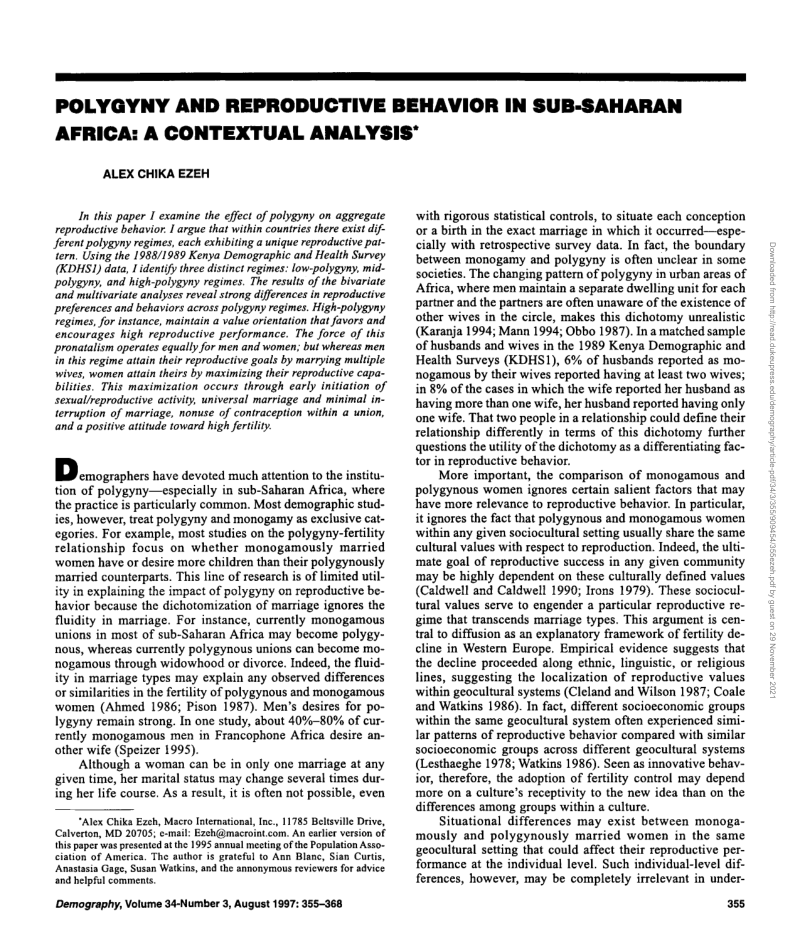Analysis of the different regions in Kenya in 1988 and 1989; concludes that polygynous societies have higher overall fertility.
- Type
- Academic / Technical Report
- Source
- Alex Chika Ezeh Non-LDS
- Hearsay
- Secondary
- Reference
Alex Chika Ezeh, "Polygyny and reproductive behavior in sub-Saharan Africa: A contextual analysis," Demography 34, no. 3 (1997): 355-368
- Scribe/Publisher
- Demography
- People
- Alex Chika Ezeh
- Audience
- Reading Public
- Transcription
In this paper I examine the effect of polygyny on aggregate reproductive behavior. I argue that within countries there exist different polygyny regimes, each exhibiting a unique reproductive pattern. Using the 1988/1989 Kenya Demographic and Health Survey (KDHS1) data, I identify three distinct regimes: low-polygyny, midpolygyny, and high-polygyny regimes. The results of the bivariate and multivariate analyses reveal strong differences in reproductive preferences and behaviors across polygyny regimes. High-polygyny regimes, for instance, maintain a value orientation that favors and encourages high reproductive performance. The force of this pronatalism operates equally for men and women; but whereas men in this regime attain their reproductive goals by marrying multiple wives, women attain theirs by maximizing their reproductive capabilities. This maximization occurs through early initiation of sexual/reproductive activity, universal marriage and minimal interruption of marriage, nonuse of contraception within a union, and a positive attitude toward high fertility.
- Citations in Mormonr Qnas
The B. H. Roberts Foundation is not owned by, operated by, or affiliated with the Church of Jesus Christ of Latter-day Saints.

